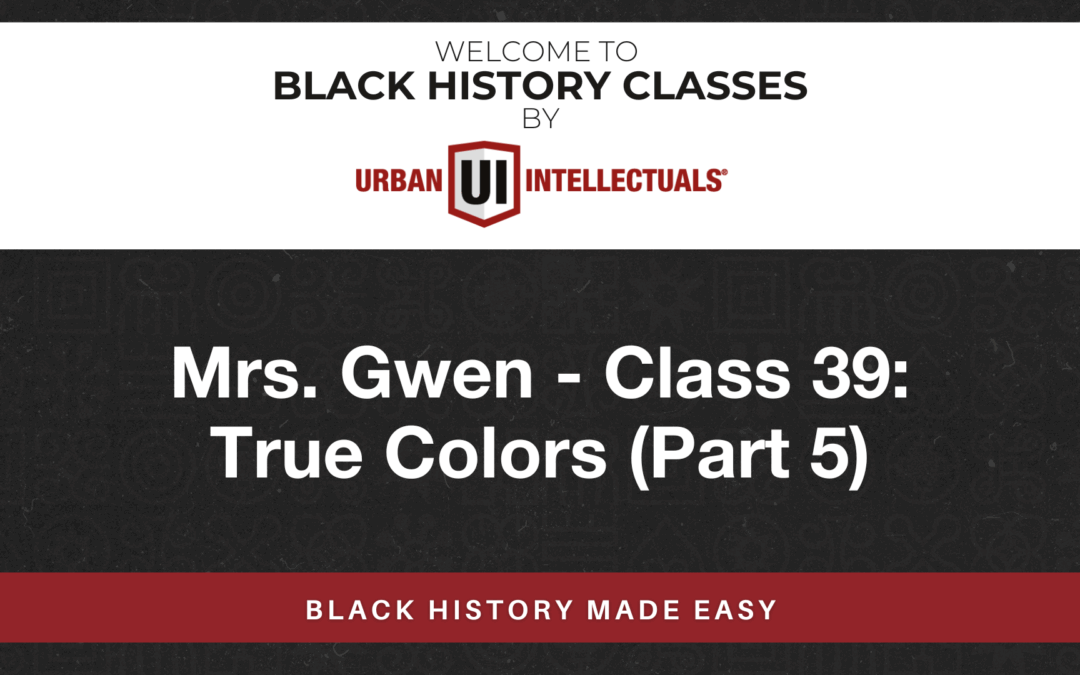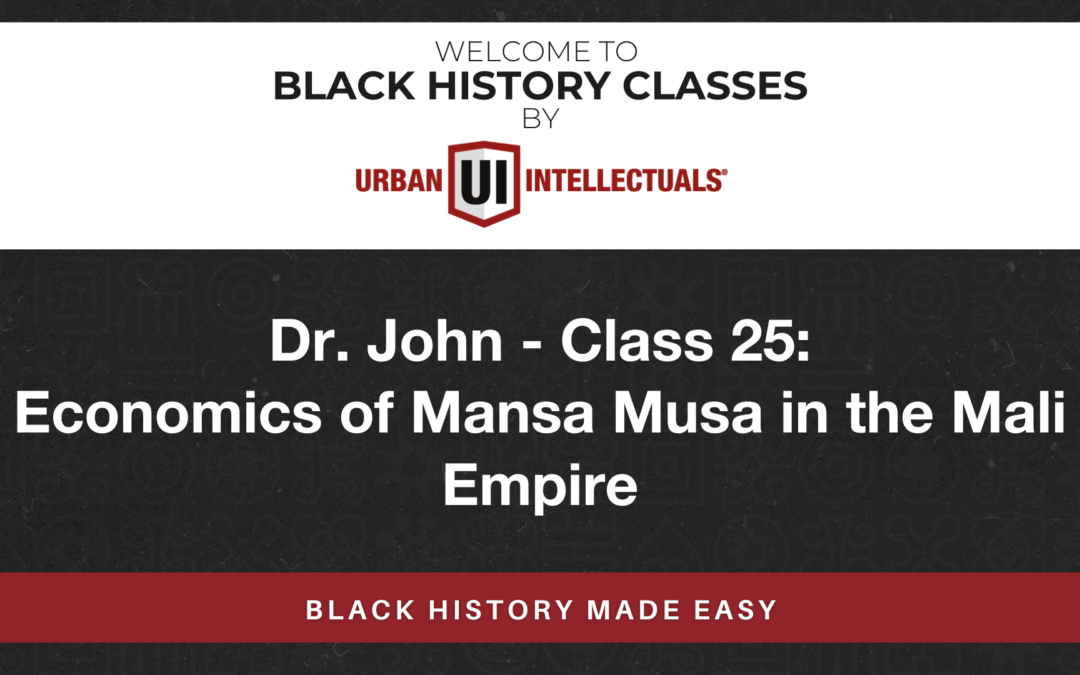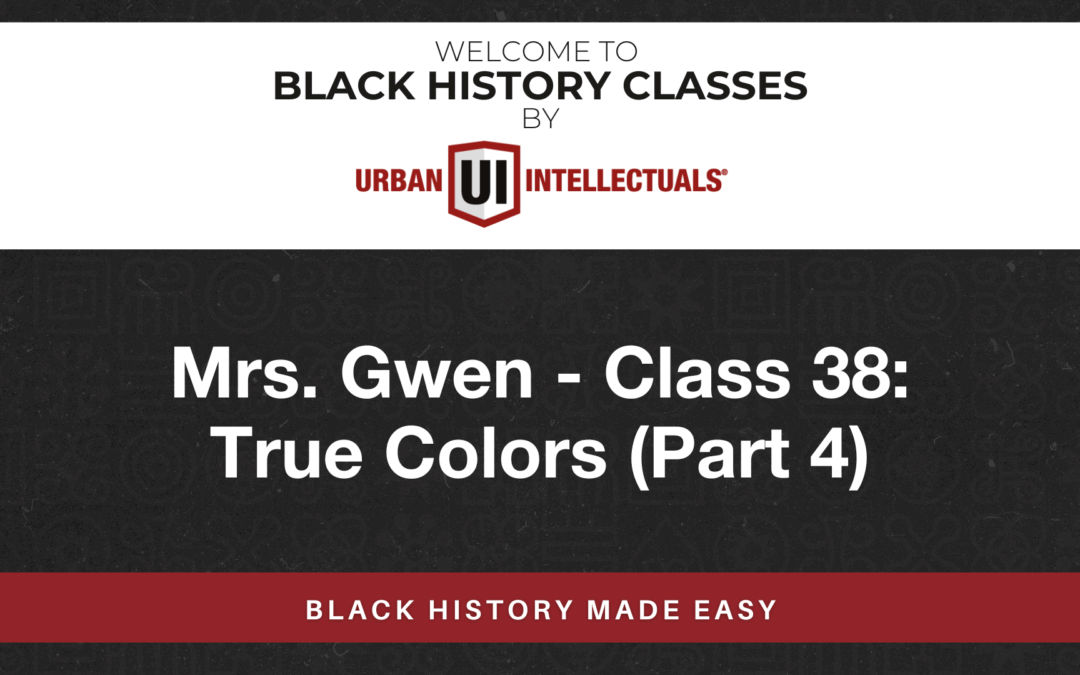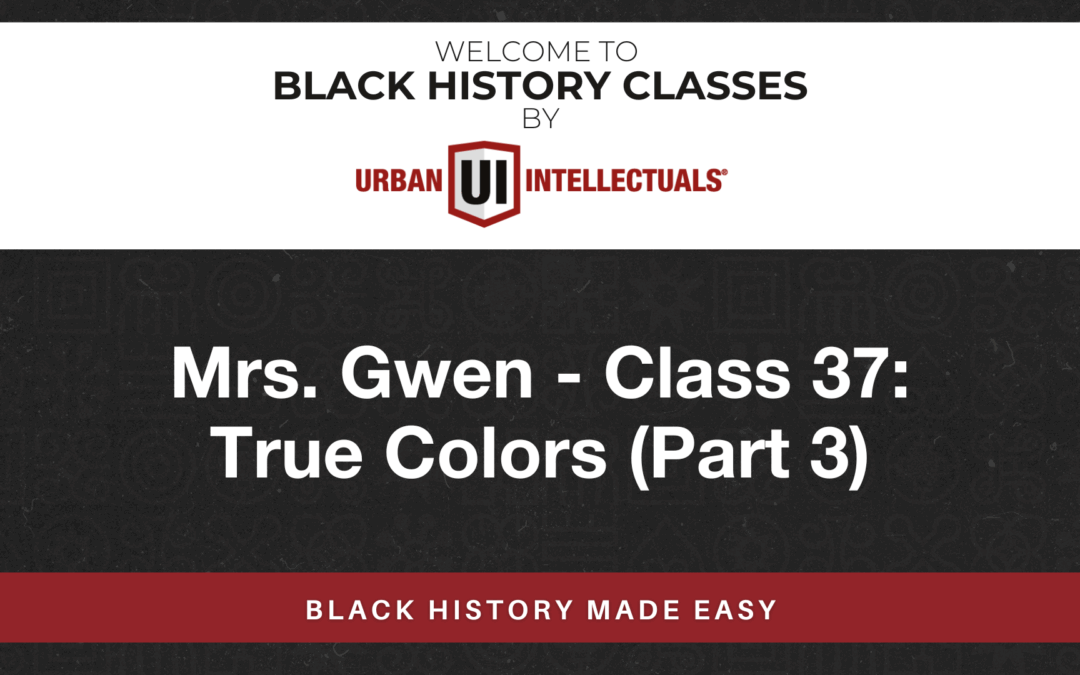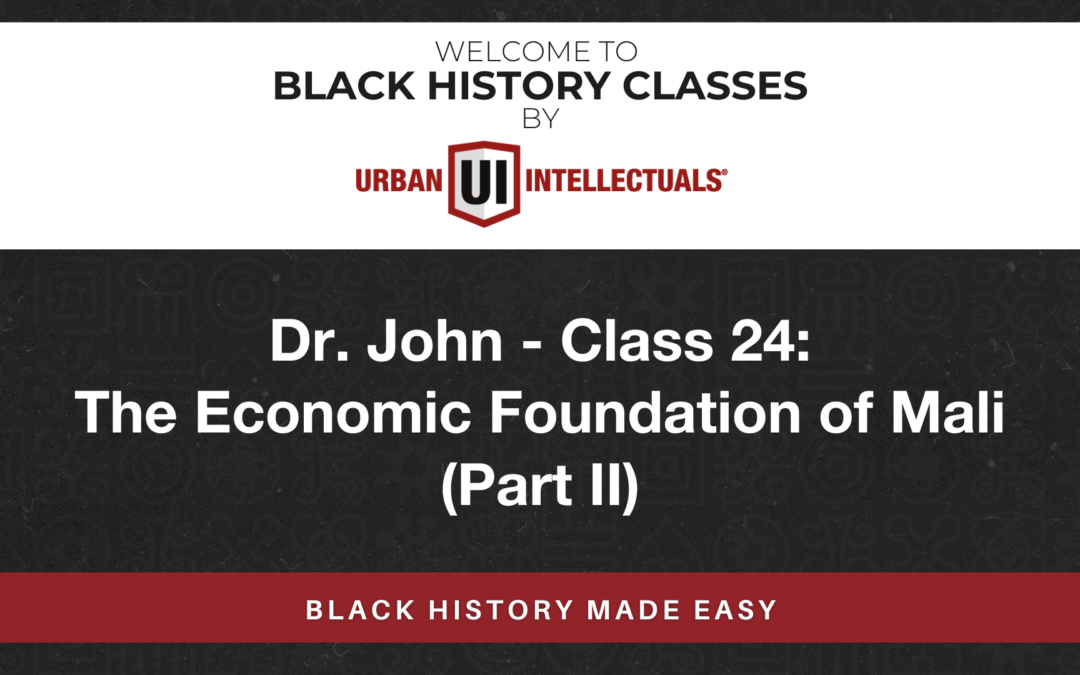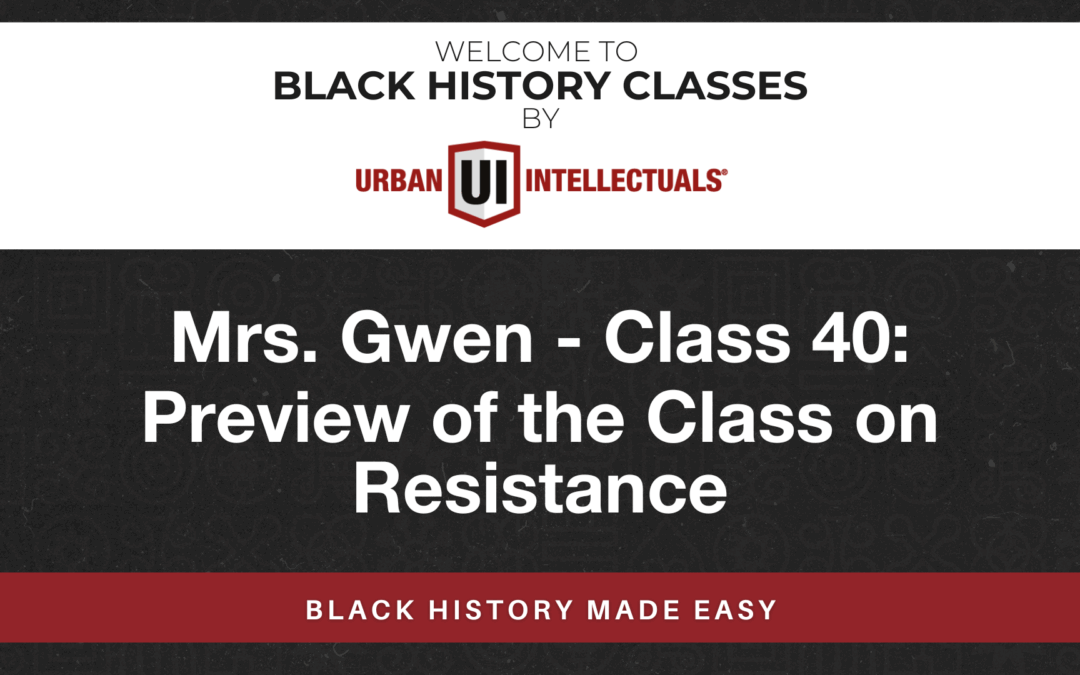
Class 40: Preview of the Class on Resistance
CLASS OVERVIEW
Listen to the overview of content of the upcoming classes by Gwen Ebron on Kings, Queens, individuals and groups who resisted oppression.
BEFORE YOU GET STARTED:
- Please check the materials that go with this lesson and print relevant materials.
- Also, check out the books and products the teachers use for further learning.
- Reach out to support@urbanintellectuals.com if you have any questions or issues.
- Some links may be affiliate links where we may earn a small commission from purchases.
Sources:
N/A
Study Guide
N/A
THE QUIZ
N/A

